South Charleston Interpretive Center
Introduction
Text-to-speech Audio
From the Paleolithic migrations of the Ice Age to revolutions in the 20th Century chemical industry, the Interpretive Center features a variety of exhibits telling the story of West Virginia's Midland Trail and South Charleston's role in this pivotal history. Built in 2008, the Center continues to host detailed exhibits on the Archaic Adena peoples and their impressive burial mounds, European settlement along the Midland Trail, and later massive industrialization and weapons manufacturing in the Kanawha Valley, for civilization's march along the Midland Trail in many ways has paralleled the United States' growth as a nation.
Images
A nutting stone in the Center's collection may have been used for cracking nuts and grinding shells, but researchers speculate such stones may have had other uses as well, such as arrow production or medicine production.
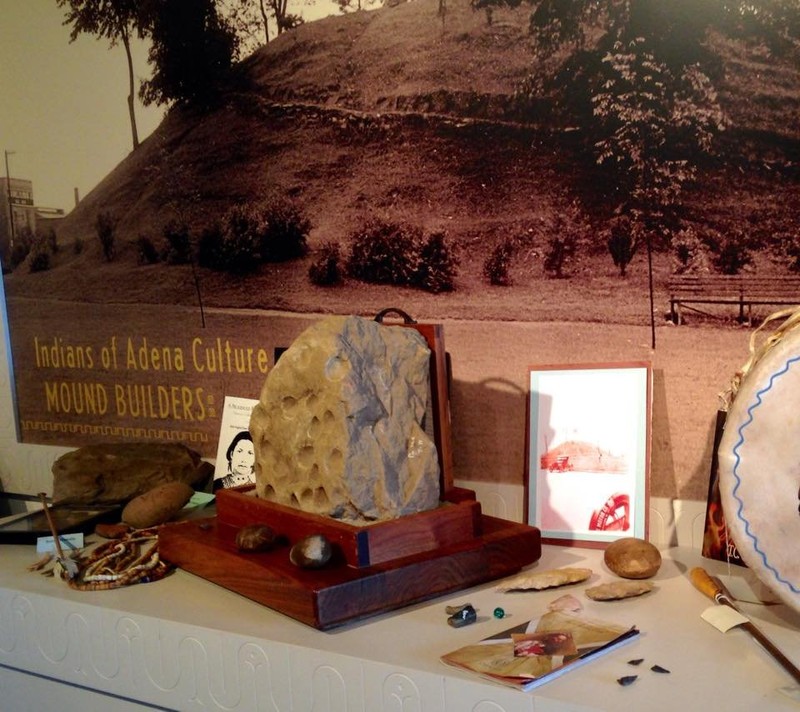
Various reproductions of paleolithic tools found in the area during excavations by the Smithsonian Society in the 1880s. Smithsonian's researchers concluded that Indian tribes in the East had descended from the Adena people.
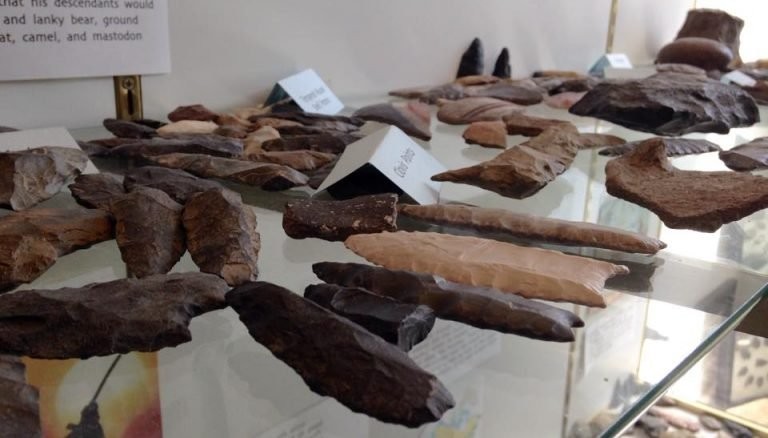
Vases from the world-famous Blenko Glass Company, which has operated in the nearby town of Milton since 1921. The company's success is owed in part to its location along the Midland Trail, a major trade route from ancient times to the modern era.

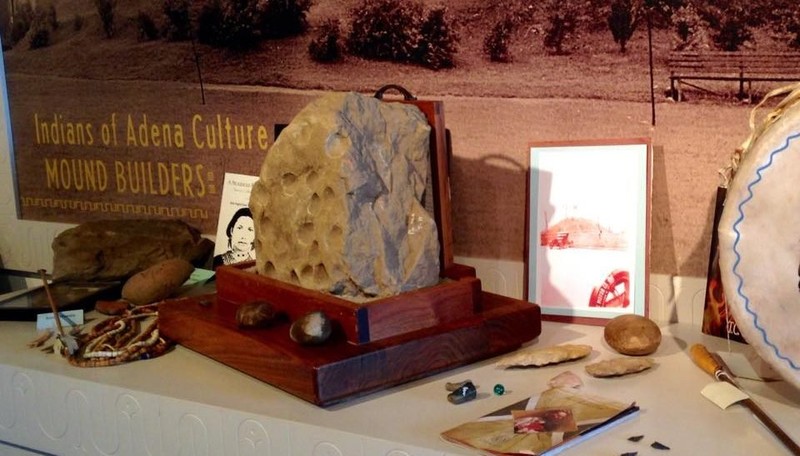
Jewelry was an important expression of Adena life from roughly 800 B.C. to A.D. 100. A variety of necklaces and gorgets have been recovered from Adena burial mounds, which seem to have been reserved for personages of importance.
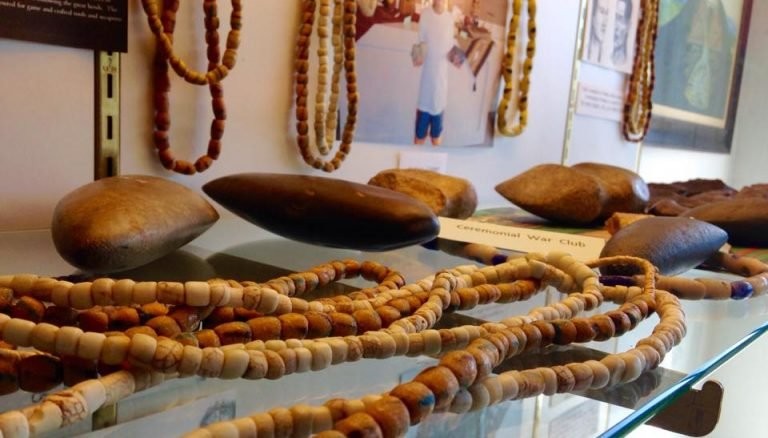
Painting of what an Adena ceremonial gathering may have looked like. Adena culture stretched from Ohio, Indiana, West Virginia, and Kentucky, to parts of Pennsylvania and New York. Courtesy of Ohio History Connection.
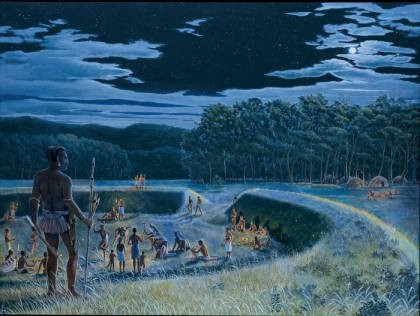
An Adena effigy pipe excavated in Chillicothe, Ohio. Such ornate pipes appear to have been very rare. While this item is not in the Center's collection, the Center contains many additional artifacts and replicas.
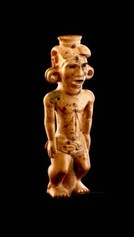
The Adena "Criel" Mound near the Center. A burial mound originally 33-35ft in height, the mound contained a number of human remains arranged in ceremonial fashion when excavated in the 1880s. The Center contains more information on the Adena people.
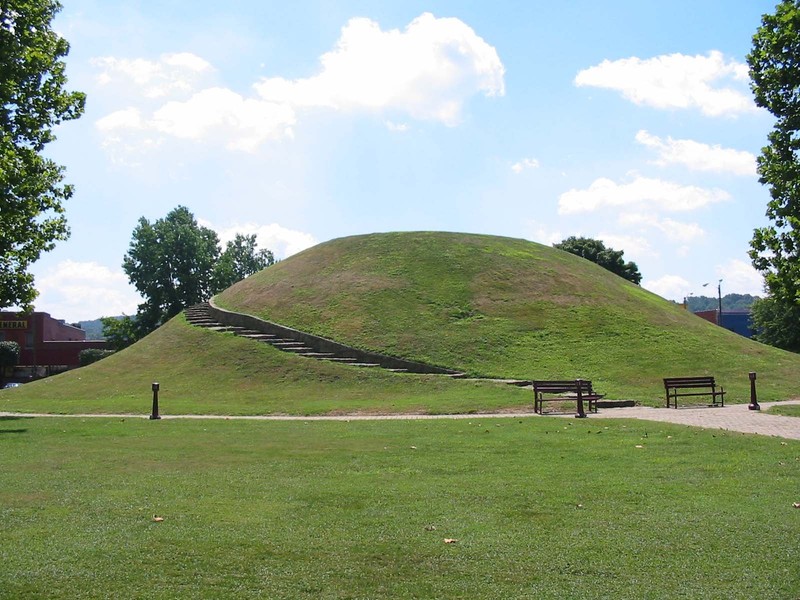
Backstory and Context
Text-to-speech Audio
Generous funding from a Federal grant and the City of South Charleston in 2008 helped create the South Charleston Interpretive Center, which seeks to contextualize the diverse history of the city and the Midland Trail as a whole through exhibits and a wide variety of artifacts.
The history of the Midland Trail extends far deeper than its current incarnation as US Route 60, an interstate highway that began construction in 1926 and extends east-west through seven states from Arizona to Virginia (though the route originally terminated in Los Angeles). In West Virginia, Route 60 follows a road far older: settlers knew these rough-hewn byways as the Kanawha and James Turnpikes, which allowed their wagons to follow the rivers westward from the young Commonwealth of Virginia to the dangerous frontier in Ohio and Kentucky. And these thoroughfares, in turn, merely formalized pathways previously well known to Native American tribes and migratory animals in the epochs before European colonization.
Charting the evolution of the Midland Trail in West Virginia through six counties provides a cross-section of America's development through history. From Paleolithic hunting peoples following in the footsteps of their nomadic prey to the Archaic settlements of the Adena Mound-builders (who built 50 massive burial mounds in the Kanawha Valley alone); from Shawnee raiding parties to pioneers pushing westward; from early captains of industry to the massive chemical and weapons manufacturing complexes of the 20th Century that belched forth everything from medicines to implements of war. Within this monumental framework lived and toiled glassworkers, coal miners, slaves, settlers, soldiers, natives, immigrants, politicians, engineers, and people from every other imaginable walk of life.
Through rotating exhibits the Interpretive Center gathers and contextualizes this collective past, allowing visitors glimpses into the many eras of the Midland Trail. At present the Center features collections about Union Carbide, Blenko Glass, the coal industry, Belgian glassworking in the early 20th Century, and the prehistoric Adena peoples.
For researchers and visitors alike, the Center has books, CDs, and a wide variety of print records on these various subjects, plus a vintage film of the Midland Trail in 1929 which can be checked out by teachers. Schools also exhibit their work in the Center. Programs are offered to churches, schools and organizations.
Sources
1. Adena Culture. Touring Ohio. Accessed November 21, 2017. http://touringohio.com/history/adena-culture.html.
2. Dragoo, Don W. Mounds for the Dead: An Analysis of the Adena Culture. Pittsburgh: Carnegie Museum, 1963.
3. Webb, William S. & Raymond S. Baby. The Adena People 2. Columbus: Ohio Historical Society, 1957.
4. Fenton, James P. "Adena." e-WV: The West Virginia Encyclopedia. 15 November 2016. Web. 21 November 2017.
5. Hieronymus, Robert C. "Charleston Ordnance Center." e-WV: The West Virginia Encyclopedia. 16 October 2012. Web. 21 November 2017.
6. Denham, Charles J. "Chemical Industry." e-WV: The West Virginia Encyclopedia. 14 May 2013. Web. 21 November 2017.
